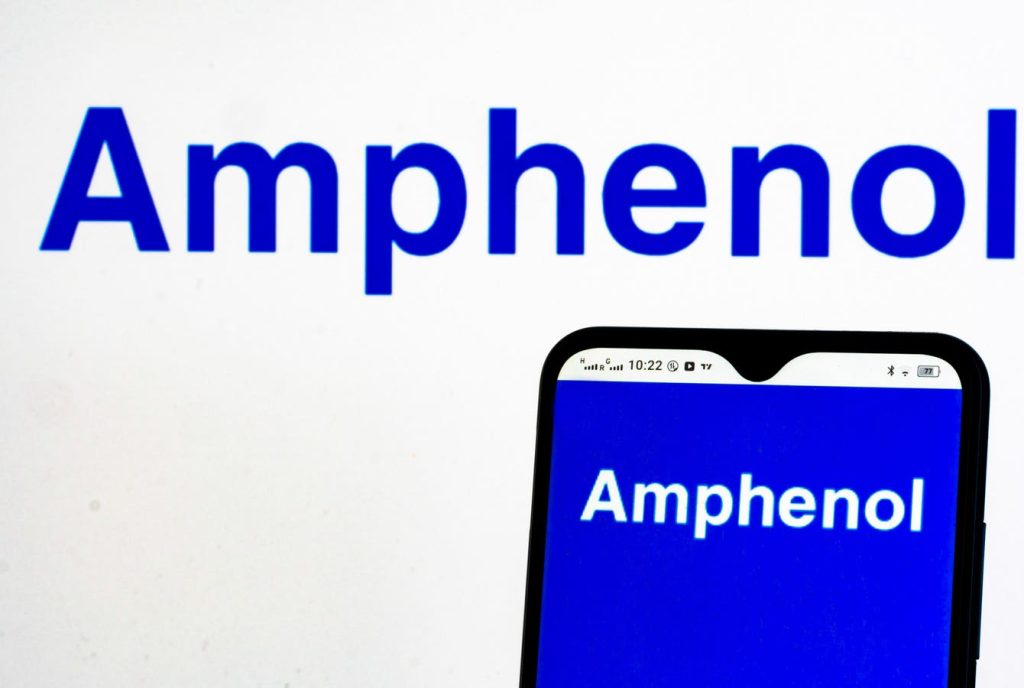Amphenol (NYSE: APH), a key player in the manufacturing of electrical, electronic, and fiber optic connectors, is viewed as a more promising investment compared to its competitor Corning (NYSE: GLW). Currently, APH stock is trading at 6.5 times its trailing revenues, significantly higher than GLW’s 3.4 times. This disparity is justified by Amphenol’s superior revenue growth, profitability metrics, and a robust future outlook. Various performance factors, including historical revenue trends, returns, and overall valuation, will be analyzed to support the argument that Amphenol is better positioned for growth over the next three years compared to Corning.
In terms of stock performance, Amphenol has outpaced Corning over the past three years. Specifically, APH’s stock price surged by approximately 150%, from around $30 to $75, since January 2021. In contrast, Corning’s stock gained only 65%, climbing to approximately $50 from its starting point of $30. Notably, APH’s performance outshined the S&P 500 index, which rose by 60% during the same period. A closer look at annual returns reveals that while GLW stock experienced a tumultuous ride — rising 6% in 2021, declining by 12% in 2022, and dropping another 1% in 2023 — APH demonstrated a more stable trajectory, with notable gains in 2021 and 2023 despite a dip in 2022. This consistent outperformance is attributed to Amphenol’s effective business strategy and market adaptation in fluctuating conditions.
An examination of revenue growth reveals a striking contrast between the two companies. Corning’s revenue growth has been relatively modest, averaging an annual increase of only 4.7%, climbing from $11.3 billion in 2020 to $12.6 billion in 2023. On the other hand, Amphenol’s revenues have soared at an impressive average annual growth rate of 14%, reaching the same revenue figure of $12.6 billion. Although Corning has benefitted from rising demand in certain segments like gasoline particulate filters, it has also faced challenges due to declining sales in its display technology sector, particularly linked to decreased demand for products in the smartphone and other consumer electronics markets. Conversely, Amphenol has leveraged opportunities in the automotive industry and advanced communication technologies, further bolstered by its involvement with key clients such as Nvidia.
When comparing profitability and financial health, Amphenol clearly stands out. While Corning has seen its operating margin improve from 4.5% in 2020 to 7.1% in 2023, Amphenol expanded its operating margin more significantly from 19.2% to 20.7%. In the most recent twelve-month period, APH’s operating margin measured 21.3%, contrasting sharply with Corning’s much lower margin of 6.5%. Additionally, APH demonstrates a stronger financial position, with only 6% of its equity derived from debt compared to Corning’s 20%. Moreover, Amphenol has a slightly higher cash cushion, with 8% of its assets held in cash versus Corning’s 6%, further emphasizing its financial stability.
Combining these insights, it is evident that Amphenol outstrips Corning in terms of revenue growth, profitability, and financial security. Analysts assert that Amphenol’s stock is currently undervalued relative to its historical averages, trading at a price-to-sales (P/S) ratio of 6.5 against a historical average of 4.5, while Corning trades at 3.4 compared to its average of 2.0. This gap in valuation perhaps speaks to the market’s anticipation of growth driven by the evolving landscape of artificial intelligence investments, with Amphenol set to benefit significantly from increased demand for technology solutions and connectivity enhancements.
Overall, while Amphenol is expected to outperform Corning significantly in the coming three years, it is critical to consider Corning’s wider industry context. Investors exploring opportunities in these companies should reflect on Amphenol’s strong fundamentals and clear path for growth, particularly as AI technologies advance. The comparative advantages APH offers, particularly in terms of growth and profitability metrics, position it as a more favorable option for investors looking for promising long-term returns amidst a competitive landscape.










